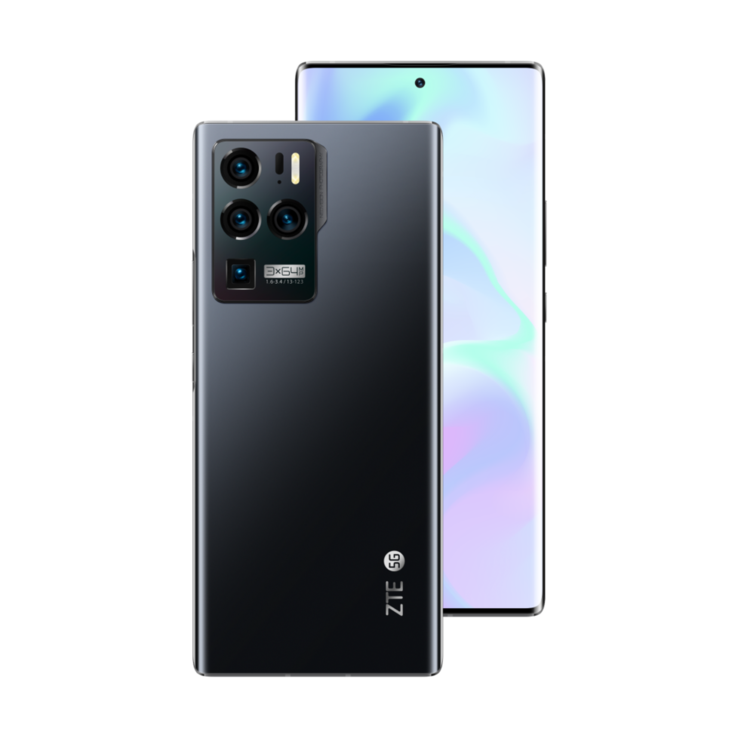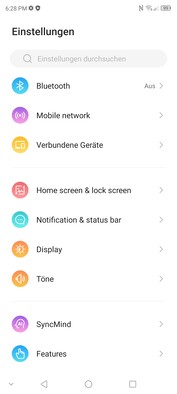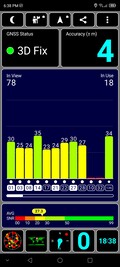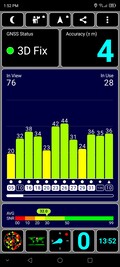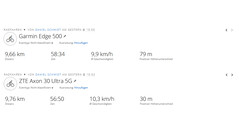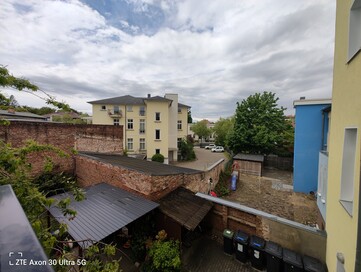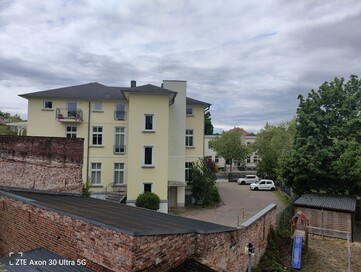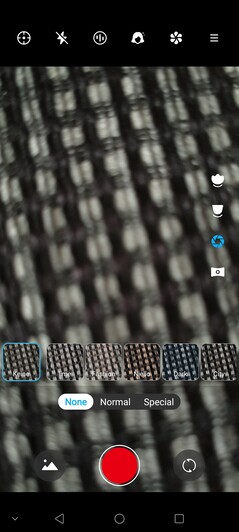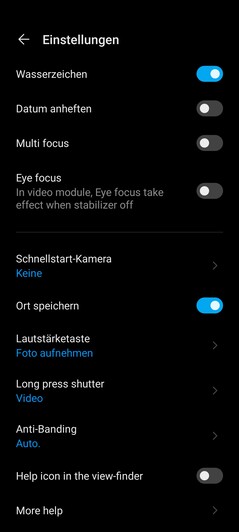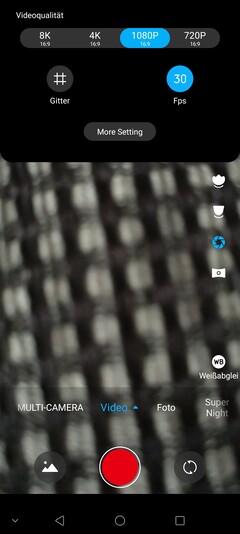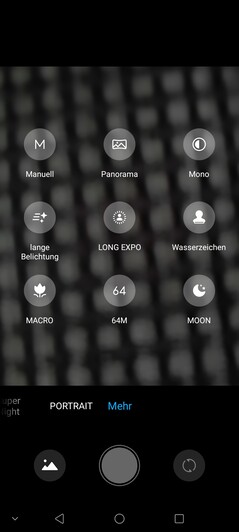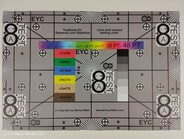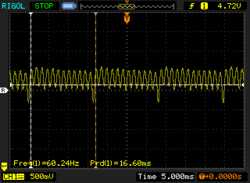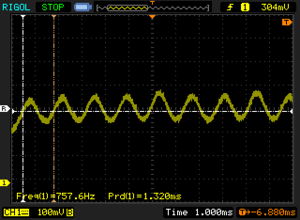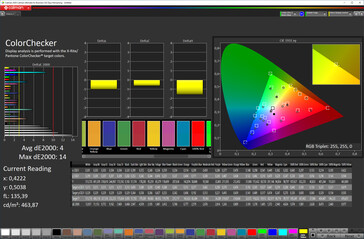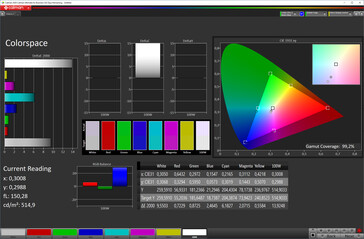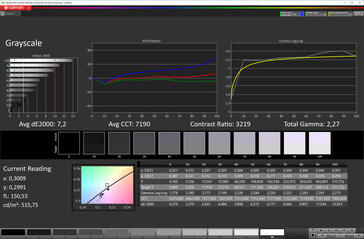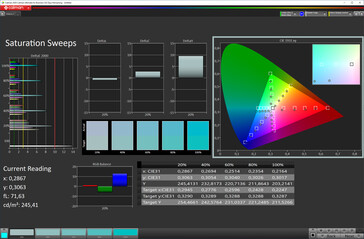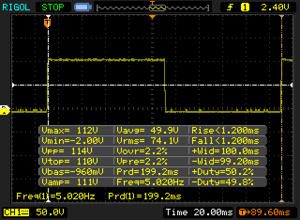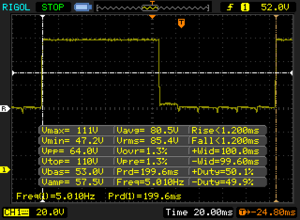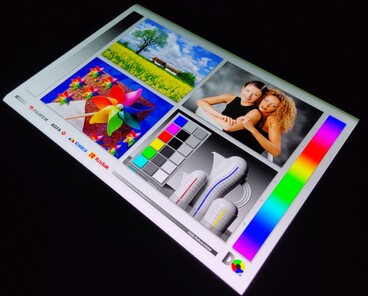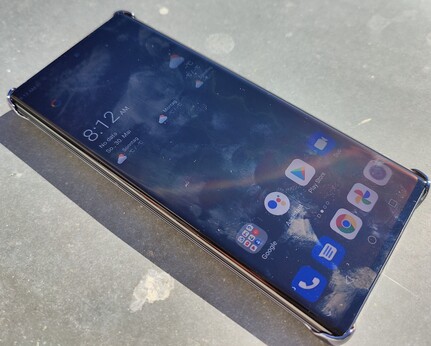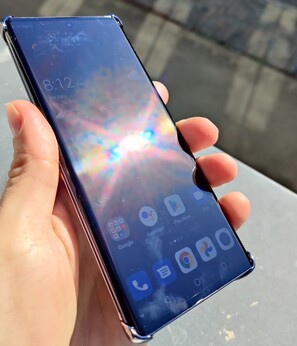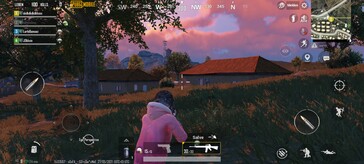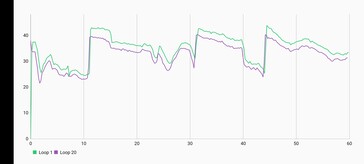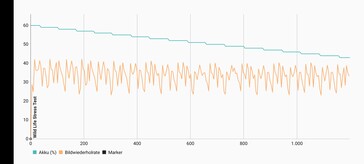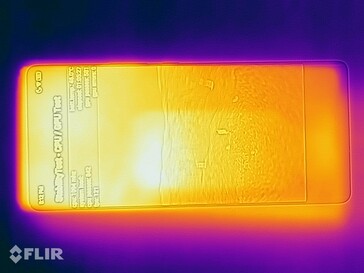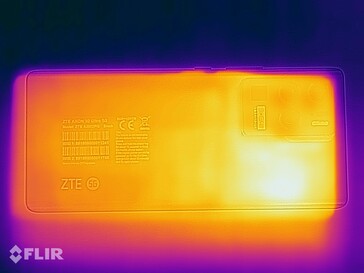ZTE Axon 30 Ultra 5G Review - Affordable flagship smartphone with 144 Hz OLED and Trinity Cam

The Axon 30 Ultra is one of the most interesting flagships of the year so far due to its relatively low RRP of 749 Euros (~$912). The flagship smartphone from ZTE relies on a Qualcomm Snapdragon 888 which is flanked by 8 GB of working memory and 128 GB of UFS 3.1 storage. The Axon 30 Ultra comes with 12 GB of RAM and 256 GB of storage for 100 Euros (~$122) more. It also has a 6.67-inch AMOLED screen with a frame rate of 144 Hz. However, the absolute highlight of the ZTE smartphone is supposed to be the Trinity camera system on the back. It houses three 64 MP cameras and an additional periscope lens.
Possible competitors in comparison
Rating | Date | Model | Weight | Drive | Size | Resolution | Price |
|---|---|---|---|---|---|---|---|
| 86.4 % v7 (old) | 06 / 2021 | ZTE Axon 30 Ultra 5G SD 888 5G, Adreno 660 | 188 g | 128 GB UFS 3.1 Flash | 6.68" | 2400x1080 | |
| 88.6 % v7 (old) | 06 / 2022 | OnePlus 9 Pro SD 888 5G, Adreno 660 | 197 g | 256 GB UFS 3.1 Flash | 6.70" | 3216x1440 | |
| 87.3 % v7 (old) | 02 / 2021 | Xiaomi Mi 11 SD 888 5G, Adreno 660 | 196 g | 128 GB UFS 3.1 Flash | 6.81" | 3200x1440 | |
| 89.6 % v7 (old) | 02 / 2021 | Samsung Galaxy S21+ Exynos 2100 5G, Mali-G78 MP14 | 200 g | 128 GB UFS 3.1 Flash | 6.70" | 2400x1080 |
Case - ZTE Axon 30 Ultra with Punch-Hole
The Axon 30 Ultra is only available with a black, matte glass casing. On the back, the striking and somewhat sharp-edged quad-camera module catches the eye directly, which is set off in a high-gloss look. The build quality meets the highest demands, but we find the thin metal frame a bit (too) sharp-edged. This has a slightly negative impact on the haptics. There is no specified protection against water penetration.
Like on the back, fifth-generation Gorilla Glass is also used on the front. The small punch hole and the thin display edges ensure that ZTE's phone still fits well in the user's hand despite the pronounced screen diagonal of 6.67 inches and enables the Axon 30 Ultra to have a very efficient display-to-surface ratio of 90 percent.
Features - ZTE smartphone with UFS 3.1 storage
The flagship smartphone's features include an Always-On Display function and USB OTG, which allows connecting peripherals via the USB-C port. The interface's data transfer is performed according to the USB 3.2 (Gen. 1) standard. Wireless image transmission of display content via Miracast also works without problems.
Software - Axon 30 Ultra 5G with Android 11
The Chinese manufacturer installs the operating system Android version 11, which is supplemented by ZTE's new user interface MyOS 11. The latter still has some translation flaws in version 11.0.0. However, the security patches are up-to-date with May 2021 at the time of the test.
Video content on streaming platforms can be viewed in HD quality thanks to Widevine DRM Level 1.
Communication and GNSS - ZTE phone with WiFi 6E
ZTE relies on Bluetooth version 5.2 and an NFC chip for near field communication. The integrated Wi-Fi module supports the Wi-Fi 6E standard, which leads to high transfer rates in everyday use with our reference router Netgear Nighthawk AX12.
The dual-sim smartphone accesses the mobile Internet via the fast 5G standard. However, the Axon 30 Ultra also supports all 4G frequencies relevant for German-speaking countries in terms of LTE.
| Networking | |
| iperf3 transmit AX12 | |
| ZTE Axon 30 Ultra 5G | |
| Samsung Galaxy S21+ | |
| Samsung Galaxy S21+ | |
| OnePlus 9 Pro | |
| Xiaomi Mi 11 | |
| iperf3 receive AX12 | |
| Samsung Galaxy S21+ | |
| Samsung Galaxy S21+ | |
| Xiaomi Mi 11 | |
| OnePlus 9 Pro | |
| ZTE Axon 30 Ultra 5G | |
In order to assess the positioning accuracy of our test device in practice, we record a route with the Garmin Edge 500 in parallel for comparison purposes. The GPS module of the Axon 30 Ultra shows a slight deviation from our navigation reference, so nothing stands in the way of everyday use for navigation in the car.
Phone features and voice quality - Axon 30 Ultra with WiFi calling
Cameras - ZTE smartphone with quad cam
The 16-megapixel selfie camera in the 2.6 mm (~0.1 in) small punch hole captures subjects with good sharpness and color fidelity. However, the bokeh effects do not always fit in portrait mode, and bright backgrounds look burned out. There are also compromises in terms of video quality (no UHD option).
However, the highlight of the Axon 30 Ultra is the "Trinity" camera setup on the back, consisting of three 64 MP sensors. The main camera is a Sony IMX686 with optical image stabilization. The 1/1.7-inch sensor has nice sharpness, even around the edges of the shots, and realistic color reproduction. However, the dynamic range as well as the white balance in the photos only convinces us to an extent. The same applies for the low-light qualities - we do not see them on the highest level.
Besides the 64 MP main camera, ZTE's flagship offers a lens for portraits and a lens for ultra-wide-angle photos, both based on the 1/1.97 inch Samsung ISOCELL GW3. The latter have a lot of details and, against the price background, an overall very appealing reproduction quality.
On top, there is a telephoto camera with periscope optics with an equivalent focal length of 120 mm and an aperture of f/3.4 as well as optical image stabilization. The resolution of only 8 MP is clearly lower, but the Axon 30 Ultra still manages good zoom shots up to 5x magnification.
Image comparison
Choose a scene and navigate within the first image. One click changes the position on touchscreens. One click on the zoomed-in image opens the original in a new window. The first image shows the scaled photograph of the test device.
Wide AngleWide AngleLow Light5x-ZoomUltra wide angle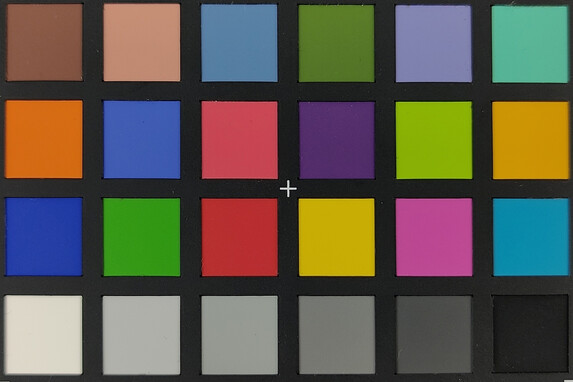
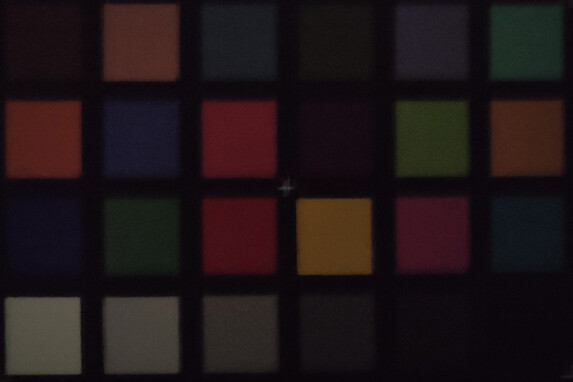
Accessories and warranty - Axon 30 Ultra with 65W power adapter
ZTE equips its flagship smartphone with a 65-watt power adapter, a USB cable and a nice protective case.
The Warranty amounts to 12 months.
Input devices & operation - ZTE smartphone with 300 Hz sampling rate
The capacitive multi-touchscreen with a sampling rate of 300 Hz recognizes inputs quickly and precisely. Thanks to the refresh rate of up to 144 Hz, even fast scrolling passages are displayed very smoothly.
The optical fingerprint sensor underneath the OLED panel is not one of the fastest on the market, but the sensor reliably detects the fingers and the positioning is pleasantly high. The 2D Face Unlock feature is also fast, but relatively insecure.
The vibration motor of the Axon 30 Ultra provides a solid haptic feedback, but operates on a manageable quality level - measured against the MSRP of 750 Euros (~$913). The competition in this price range, including the Xiaomi Mi 11, among others, are much better.
Display - Axon 30 Ultra with 144 Hz
Like the Axon 20 the Axon 30 Ultra offers an AMOLED display with a Full HD+ resolution. With a diagonal of 6.67 inches, ZTE's phone has a pixel density of slightly below 400 PPI.
The maximum screen brightness of 641 cd/m² is good and the illumination is even at 93%, but the OLED panel should shine brighter considering the price level.
In our more realistic APL50 measurement, it is just as good at 758 cd/m², but HDR content with the certified panel is not optimally effective with this luminance.
Since organic light-emitting diodes almost never shine with their theoretical maximum brightness, the Axon 30 Ultra's display brightness is also reduced accordingly via pulse width modulation. The frequency of the flickering is relatively high and irregular at 89 to 758 Hz. We measured a frequency of 120 Hz above 37 percent, but the fluctuations in the amplitude course are much smaller here. A DC dimming mode is not available.
| |||||||||||||||||||||||||
Brightness Distribution: 93 %
Center on Battery: 638 cd/m²
Contrast: ∞:1 (Black: 0 cd/m²)
ΔE ColorChecker Calman: 4 | ∀{0.5-29.43 Ø4.77}
ΔE Greyscale Calman: 7.2 | ∀{0.09-98 Ø5}
99.2% sRGB (Calman 2D)
Gamma: 2.27
CCT: 7190 K
| ZTE Axon 30 Ultra 5G AMOLED, 2400x1080, 6.7" | OnePlus 9 Pro AMOLED, 3216x1440, 6.7" | Xiaomi Mi 11 LED DotDisplay, 3200x1440, 6.8" | Samsung Galaxy S21+ Dynamic AMOLED 2X, 2400x1080, 6.7" | |
|---|---|---|---|---|
| Screen | 46% | 49% | 44% | |
| Brightness middle (cd/m²) | 638 | 733 15% | 840 32% | 814 28% |
| Brightness (cd/m²) | 641 | 746 16% | 845 32% | 814 27% |
| Brightness Distribution (%) | 93 | 97 4% | 98 5% | 97 4% |
| Black Level * (cd/m²) | ||||
| Colorchecker dE 2000 * | 4 | 0.95 76% | 1.2 70% | 2 50% |
| Colorchecker dE 2000 max. * | 14 | 2.01 86% | 2.7 81% | 3.6 74% |
| Greyscale dE 2000 * | 7.2 | 1.7 76% | 2 72% | 1.4 81% |
| Gamma | 2.27 97% | 2.21 100% | 2.26 97% | 2.12 104% |
| CCT | 7190 90% | 6591 99% | 6492 100% | 6568 99% |
* ... smaller is better
Screen Flickering / PWM (Pulse-Width Modulation)
| Screen flickering / PWM detected | 758 Hz | ≤ 37 % brightness setting | |
The display backlight flickers at 758 Hz (worst case, e.g., utilizing PWM) Flickering detected at a brightness setting of 37 % and below. There should be no flickering or PWM above this brightness setting. The frequency of 758 Hz is quite high, so most users sensitive to PWM should not notice any flickering. In comparison: 53 % of all tested devices do not use PWM to dim the display. If PWM was detected, an average of 8083 (minimum: 5 - maximum: 343500) Hz was measured. | |||
The analysis of the photospectrometer and the CalMAN software reveals high average delta E deviations from the sRGB color space for this price range with 4 (colors) and 7.2 (grayscale), respectively, in the "Normal" display mode - the ideal range starts at values <3. However, the OLED panel covers the sRGB color space almost completely.
Display Response Times
| ↔ Response Time Black to White | ||
|---|---|---|
| 2.4 ms ... rise ↗ and fall ↘ combined | ↗ 1.2 ms rise | |
| ↘ 1.2 ms fall | ||
| The screen shows very fast response rates in our tests and should be very well suited for fast-paced gaming. In comparison, all tested devices range from 0.1 (minimum) to 240 (maximum) ms. » 11 % of all devices are better. This means that the measured response time is better than the average of all tested devices (20.2 ms). | ||
| ↔ Response Time 50% Grey to 80% Grey | ||
| 2.4 ms ... rise ↗ and fall ↘ combined | ↗ 1.2 ms rise | |
| ↘ 1.2 ms fall | ||
| The screen shows very fast response rates in our tests and should be very well suited for fast-paced gaming. In comparison, all tested devices range from 0.165 (minimum) to 636 (maximum) ms. » 10 % of all devices are better. This means that the measured response time is better than the average of all tested devices (31.6 ms). | ||
The viewing angles of the display are on a good level. Outdoor readability is also possible without problems thanks to the high-contrast organic display. However, grease streaks are annoying due to the relatively poor oleophobic coating, especially when reflections occur. In addition, the brighter competition, including the Xiaomi Mi 11, can be seen indirect sunlight. The Xiaomi Mi 11 among others, are correspondingly easier to read.
Performance - ZTE phone with Snapdragon 888
The Snapdragon 888 installed in the Axon 30 Ultra Snapdragon 888 is based on the Kryo-680 CPU unit. This integrates a fast "Prime Core" based on the ARM Cortex-X1 architecture, three fast Cortex-A78-based performance cores, and four ARM Cortex-A55 cores. Besides the CPU unit, the chipset has a Qualcomm Adreno 660 as the graphics processor.
In our benchmark package, the ZTE phone is on par with the Snapdragon 888 competition, and the Axon 30 Ultra leaves an excellent impression in everyday use. The system performance is first-rate and the loading times of applications are very short. However, write and read rates of the UFS storage are relatively low for the 3.1 standard.
| AImark - Score v2.x (sort by value) | |
| ZTE Axon 30 Ultra 5G | |
| Xiaomi Mi 11 | |
| Samsung Galaxy S21+ | |
| Xiaomi Redmi K40 Pro | |
| Average Qualcomm Snapdragon 888 5G (171404 - 264766, n=15) | |
| Jetstream 2 - 2.0 Total Score | |
| Average of class Smartphone (23.8 - 387, n=149, last 2 years) | |
| ZTE Axon 30 Ultra 5G (chrome 90) | |
| Average Qualcomm Snapdragon 888 5G (61.3 - 125.1, n=13) | |
| Xiaomi Mi 11 (Chrome 88) | |
| Samsung Galaxy S21+ (Chrome 88.0.4324.152) | |
| OnePlus 9 Pro (Microsoft Edge 46) | |
| Speedometer 2.0 - Result 2.0 | |
| Average of class Smartphone (15.2 - 643, n=120, last 2 years) | |
| ZTE Axon 30 Ultra 5G (chrome 90) | |
| Samsung Galaxy S21+ (Chrome 88.0.4324.152) | |
| Average Qualcomm Snapdragon 888 5G (46.9 - 121, n=12) | |
| Xiaomi Mi 11 (Chrome 88) | |
| OnePlus 9 Pro (Microsoft Edge 46) | |
| Octane V2 - Total Score | |
| Average of class Smartphone (2228 - 126661, n=195, last 2 years) | |
| ZTE Axon 30 Ultra 5G (chrome 90) | |
| Average Qualcomm Snapdragon 888 5G (23491 - 47543, n=20) | |
| Samsung Galaxy S21+ (Chrome 88.0.4324.152) | |
| Xiaomi Mi 11 (Chrome 88) | |
| OnePlus 9 Pro (Microsoft Edge 46) | |
| Mozilla Kraken 1.1 - Total | |
| OnePlus 9 Pro (Microsoft Edge 46) | |
| Samsung Galaxy S21+ (Chrome 88.0.4324.152) | |
| Xiaomi Mi 11 (Chrome 88) | |
| Average Qualcomm Snapdragon 888 5G (891 - 1841, n=20) | |
| ZTE Axon 30 Ultra 5G (chrome 90) | |
| Average of class Smartphone (257 - 28190, n=155, last 2 years) | |
* ... smaller is better
| ZTE Axon 30 Ultra 5G | OnePlus 9 Pro | Xiaomi Mi 11 | Samsung Galaxy S21+ | Average 128 GB UFS 3.1 Flash | Average of class Smartphone | |
|---|---|---|---|---|---|---|
| AndroBench 3-5 | 17% | 16% | 30% | 8% | 76% | |
| Sequential Read 256KB (MB/s) | 1464 | 1995 36% | 1615 10% | 1623 11% | 1575 ? 8% | 2248 ? 54% |
| Sequential Write 256KB (MB/s) | 689 | 769 12% | 754 9% | 1037 51% | 780 ? 13% | 1887 ? 174% |
| Random Read 4KB (MB/s) | 208.2 | 258.7 24% | 278.5 34% | 309.6 49% | 244 ? 17% | 299 ? 44% |
| Random Write 4KB (MB/s) | 265 | 254.3 -4% | 289.3 9% | 283.3 7% | 244 ? -8% | 346 ? 31% |
Games - gaming is no problem with the ZTE Axon 30 Ultra
The powerful Adreno-660 graphics unit offers enough computing power to ensure smooth playback even for demanding games. Current games can be rendered in best graphics and with a high frame rate with the ZTE flagship.
Emissions - Axon 30 Ultra gets hot
Temperature
The surface temperatures are quite high even when idling, but the ZTE phone gets much warmer under load with a peak of over 44 °C (111.2 °F). Thanks to the Vapor Chamber design in conjunction with water cooling, we still achieve continuous performance with the Axon 30 Ultra in the 3DMark Wild Life stress test.
| 3DMark | |
| Wild Life Stress Test Stability | |
| ZTE Axon 30 Ultra 5G | |
| Xiaomi Mi 11 | |
| Samsung Galaxy S21+ | |
| OnePlus 9 Pro | |
| Wild Life Extreme Stress Test | |
| ZTE Axon 30 Ultra 5G | |
(±) The maximum temperature on the upper side is 44.1 °C / 111 F, compared to the average of 35.2 °C / 95 F, ranging from 21.9 to 247 °C for the class Smartphone.
(±) The bottom heats up to a maximum of 43.6 °C / 110 F, compared to the average of 34 °C / 93 F
(+) In idle usage, the average temperature for the upper side is 31.8 °C / 89 F, compared to the device average of 32.9 °C / 91 F.
Speaker
The two speakers of the upper-class phone provide a good and, at over 89 dB(A), very loud sound experience. The output is dominated by trebles, tones from medium frequencies are somewhat overlaid.
Wired headphones can be connected to the smartphone via the USB Type-C port. Alternatively, Bluetooth 5.2 can be used for wireless transmission. A broad codec palette of SBC, AAC, aptX, aptX HD, aptX Adaptive and LDAC is available here.
ZTE Axon 30 Ultra 5G audio analysis
(+) | speakers can play relatively loud (89.3 dB)
Bass 100 - 315 Hz
(-) | nearly no bass - on average 29.5% lower than median
(±) | linearity of bass is average (10.1% delta to prev. frequency)
Mids 400 - 2000 Hz
(+) | balanced mids - only 4.5% away from median
(+) | mids are linear (4.2% delta to prev. frequency)
Highs 2 - 16 kHz
(±) | higher highs - on average 5.2% higher than median
(+) | highs are linear (3% delta to prev. frequency)
Overall 100 - 16.000 Hz
(±) | linearity of overall sound is average (19.2% difference to median)
Compared to same class
» 25% of all tested devices in this class were better, 9% similar, 66% worse
» The best had a delta of 11%, average was 35%, worst was 134%
Compared to all devices tested
» 45% of all tested devices were better, 7% similar, 47% worse
» The best had a delta of 4%, average was 24%, worst was 134%
OnePlus 9 Pro audio analysis
(±) | speaker loudness is average but good (81.1 dB)
Bass 100 - 315 Hz
(-) | nearly no bass - on average 64.7% lower than median
(+) | bass is linear (0% delta to prev. frequency)
Mids 400 - 2000 Hz
(-) | nearly no mids - on average 64.7% lower than median
(+) | mids are linear (0% delta to prev. frequency)
Highs 2 - 16 kHz
(-) | nearly no highs - on average 64.7% lower than median
(+) | highs are linear (0% delta to prev. frequency)
Overall 100 - 16.000 Hz
(-) | overall sound is not linear (119% difference to median)
Compared to same class
» 88% of all tested devices in this class were better, 8% similar, 4% worse
» The best had a delta of 11%, average was 35%, worst was 134%
Compared to all devices tested
» 96% of all tested devices were better, 3% similar, 1% worse
» The best had a delta of 4%, average was 24%, worst was 134%
Battery life - ZTE smartphone charges quickly
Energy consumption
Energy is supplied by a 4,600 mAh capacity battery, which can be recharged in 45 minutes with the included 65-watt power adapter when completely drained. Wireless charging is not supported by the Axon 30 Ultra.
| Off / Standby | |
| Idle | |
| Load |
|
Key:
min: | |
| ZTE Axon 30 Ultra 5G 4600 mAh | OnePlus 9 Pro 4500 mAh | Xiaomi Mi 11 4600 mAh | Samsung Galaxy S21+ 4800 mAh | Average Qualcomm Snapdragon 888 5G | Average of class Smartphone | |
|---|---|---|---|---|---|---|
| Power Consumption | -21% | -17% | 16% | 6% | 3% | |
| Idle Minimum * (Watt) | 1 | 1.6 -60% | 1.57 -57% | 0.74 26% | 1.066 ? -7% | 0.847 ? 15% |
| Idle Average * (Watt) | 1.99 | 2 -1% | 1.92 4% | 1.27 36% | 1.58 ? 21% | 1.446 ? 27% |
| Idle Maximum * (Watt) | 2.02 | 2.4 -19% | 1.94 4% | 1.33 34% | 1.733 ? 14% | 1.63 ? 19% |
| Load Average * (Watt) | 5.15 | 6.2 -20% | 6.32 -23% | 6.32 -23% | 5.46 ? -6% | 6.95 ? -35% |
| Load Maximum * (Watt) | 10.36 | 11 -6% | 11.65 -12% | 9.61 7% | 9.79 ? 6% | 11.3 ? -9% |
* ... smaller is better
Battery life
In our real-world WLAN test, with an adjusted display brightness of 150 cd/m², the ZTE smartphone achieves about 10 hours with the 144 Hz option selected - not a really good rate, but it is okay in view of the high refresh rate. If the panel is throttled to 60 Hz, the Axon 30 Ultra can run for about 2 hours (736 min) longer.
| ZTE Axon 30 Ultra 5G 4600 mAh | OnePlus 9 Pro 4500 mAh | Xiaomi Mi 11 4600 mAh | Samsung Galaxy S21+ 4800 mAh | |
|---|---|---|---|---|
| Battery runtime | ||||
| WiFi v1.3 (h) | 10.3 | 16.7 62% | 8.8 -15% | 10.9 6% |
Pros
Cons
Verdict of the ZTE Axon 30 Ultra 5G
The current flagship smartphone from ZTE offers a good overall package with a lot of performance and a 65W fast charging technology including a matching power adapter in the scope of delivery for an MSRP of about 750 Euros (~$913). Due to the focus on a high-resolution quad camera setup, the Axon 30 Ultra has very good photo qualities, which the upper-class competition, such as the Xiaomi Mi 11 or Samsung Galaxy S21 Plus cannot offer.
We like the simple design of the Axon 30 Ultra, but we miss the color options of ZTE's smartphone.
Apart from the Trinity Cam, however, ZTE's flagship is not free of criticism, even considering the comparatively "cheap" (flagship) pricing. The 144 Hz OLED panel is very smooth, but the brightness, resolution, and color reproduction as well as the Gorilla Glass generation from 2016 do not really fit into the image of a current premium smartphone. We also miss some points on the equipment list and a consistently translated user interface compared with the competition.
Price and availability
The ZTE Axon 30 Ultra 5G is available for 750 Euros (~$913), currently only in the ZTE store.
ZTE Axon 30 Ultra 5G
- 08/31/2022 v7 (old)
Marcus Herbrich


